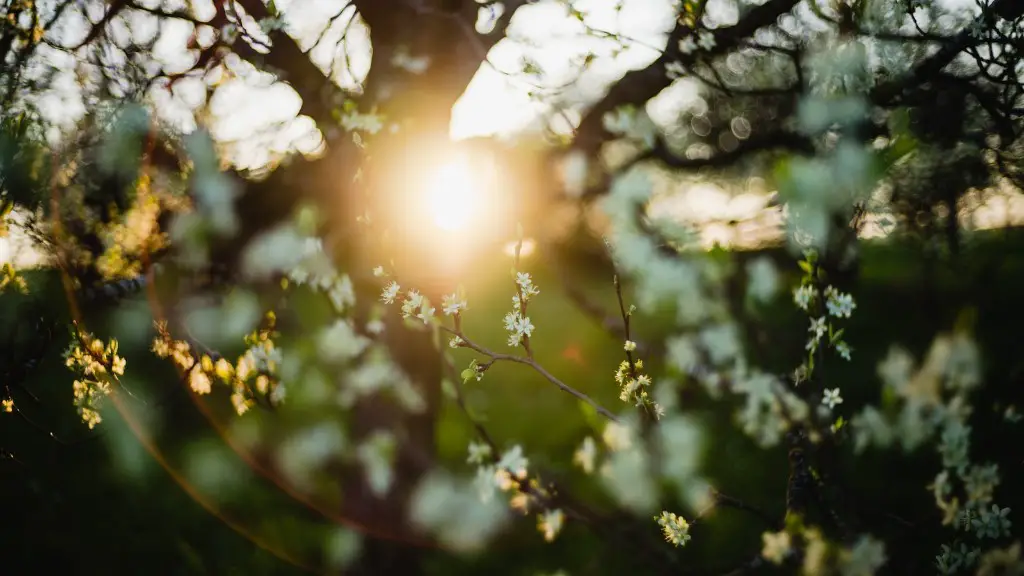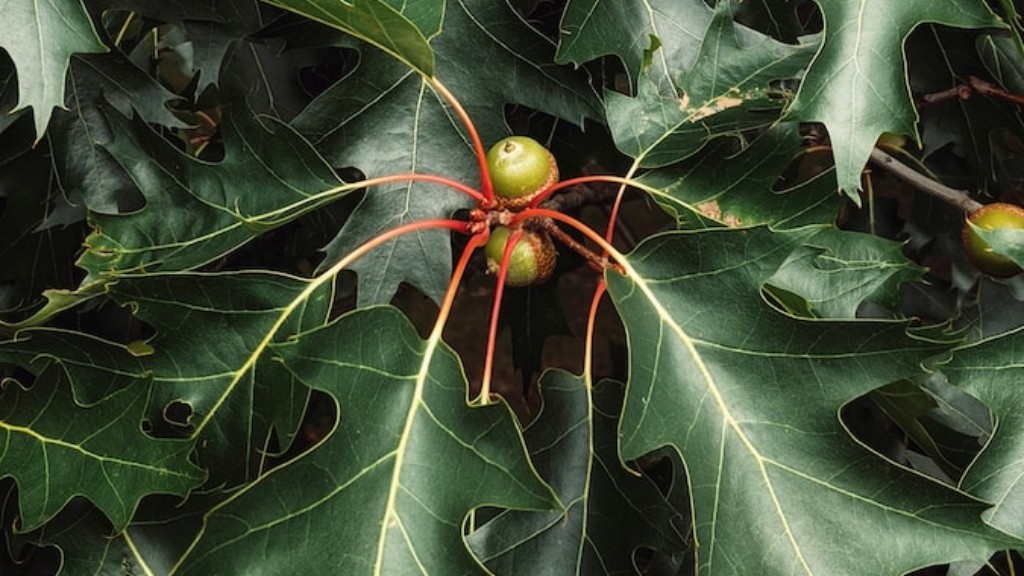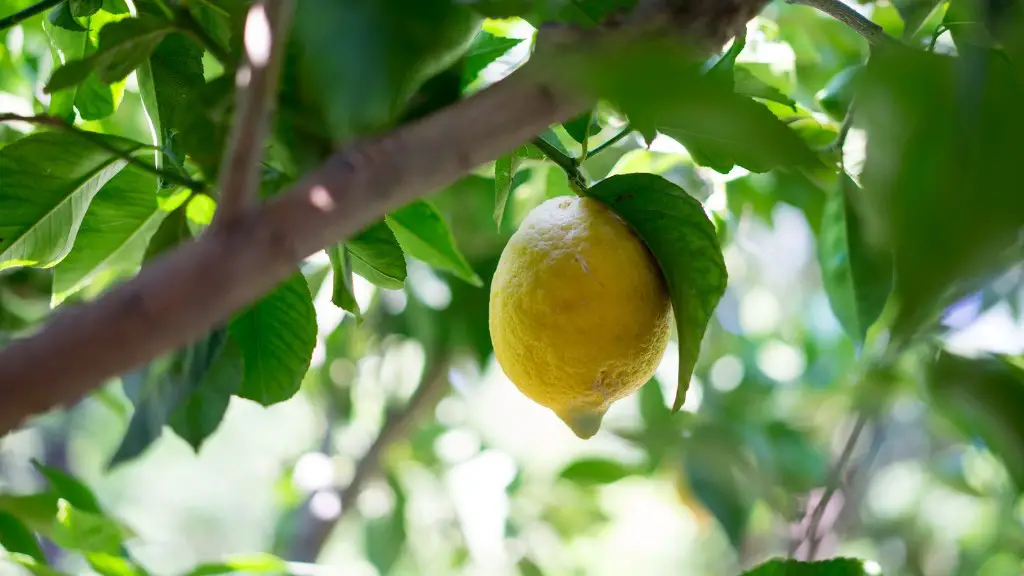One of the most common concerns for apple growers is to recognize when their apple tree has already died or is struggling. There is no single, surefire way to tell if an apple tree is dead, but there are multiple clues that can help diagnose and even differentiate between different types of death. Some signs of a dead apple tree include crown die-back, reduced leaf area, and dead limbs. Here are some specific ways to tell if an apple tree is dead.
First, look for crown die-back of the tree. This is measured by looking at the height of the crown, which is the canopy of foliage, and comparing it to historic records. If the crown has reduced drastically, it has likely died and the tree no longer has the ability to regrow its foliage.
Next, inspect the leaves for signs of disease, such as brown spots or yellowing. Yellowing leaves are a sign that the tree is not receiving enough nutrients for proper growth. Additionally, look at the foliage coverage of the tree; if the canopy is sparse, sparse leaves, or if the canopy is much smaller than in previous years, the tree is likely dead.
Third, inspect the branches and check for any dead or wilted limbs. Dead branches will appear black and withered, with no new growth. Additionally, healthy trees will produce a small amount of sap at the base of the limbs.
Fourth, observe the soil for signs of dead roots. Dead roots will look dark and wilted, and will not be able to absorb nutrients from the soil. Additionally, inspect for any dying or unhealthy roots; these will appear yellow or brown, and will be brittle to the touch.
Finally, look for symptoms of mildew or fungus. These can appear on the leaves, branches, bark, and roots, and are indicators of an unhealthy tree. Mildew and fungus can cause leaves to yellow, with spots on the leaves, and can also cause the bark to become discolored or covered in spots.
Inspecting Additional Factors Before Deciding Tree Is Dead
It is not only important to inspect the tree itself, but also to look at external factors that might be influencing its health. It is important to also inspect the area near the tree and see if there is any construction or pollution that can be affecting the tree’s health. Additionally, make sure the tree is receiving enough water and essential nutrients, such as nitrogen and phosphorus.
Other things to explore include the proximity of other trees. If the tree is surrounded by other trees that are healthy, then their health can be attributed to the soil and other environmental conditions. But if the tree is surrounded by unhealthy trees, then it is likely that the same environmental conditions are contributing to the death of the tree.
It is also important to assess if fertilizer or other treatments are available to the tree. These can give the tree the nitrogen and phosphorus it needs to remain healthy. However, over-fertilizing can lead to root burn and can stunt the growth of the tree.
Finally, the age of the tree can be a factor. If the tree is a few decades old and is showing signs of death, then its age may be a factor in its decline. It is important to understand the age of a tree in order to estimate its expected lifespan, and to know when the tree is likely to die.
Diagnosing The Cause of Death
In order to make a conclusive diagnosis, it is important to identify the cause of death. There are many causes of tree death, from root rot to diseases to pests, and any or all of these can contribute to a tree’s death. After identifying the cause of death, it is important to address it and make changes to ensure it does not occur again.
For example, root rot is caused by having too much water in the soil, and is often an indication of poor drainage. To address this, it is important to implement back-fill or mulch techniques, which can help the tree absorb more water and release it quickly, avoiding root rot.
Additionally, bacteria and fungi can cause diseases in apple trees, and can spread quickly. To prevent this, it is important to use proper pruning techniques and to remove diseased branches. Additionally, using fungicidal sprays can help protect the trees from any diseases or diseases might be present.
Another common cause of death is pests. These can be caterpillars, birds, deer, beetles, and other animals that feed on the leaves and fruits of the tree. To prevent pests, it is important to install fencing and other guards around the tree, and to use insecticides to kill any existing pests.
Finally, it is important to check the roots of the tree to determine if they are healthy. A healthy root system is essential for the health of the tree, and if the tree’s roots are unhealthy, it is important to address this issue by replanting the tree in a new location or replanting it in the same place with different soil.
Taking Action To Save The Tree
If the tree is not yet dead, there are a few steps that can be taken to help the tree recover. To do this, it is important to first diagnose the issue. After doing this, it is important to implement the changes necessary to strengthen the tree and help it survive. For example, if the problem is linked to environmental conditions, then it is important to address these factors, such as soil fertility and water supply.
Additionally, if the tree needs more nutrients to survive, then it is important to use fertilizer to feed the tree. However, it is important to use the right type of fertilizer, as too much fertilizer can lead to root burn and damage to the tree. If the tree needs more water, then it is important to use deep water techniques, such as installing sub-irrigation systems, which can help the tree absorb water more efficiently.
It is also important to inspect the tree regularly, set traps to control pests, and prune it correctly. Pruning can help to open up the canopy of the tree and allow more sunlight to reach all parts of the tree. Additionally, proper pruning can improve air circulation, which can help to prevent disease.
If the tree has been infected with a bacterial or fungal disease, then it is important to use antifungal and antibacterial sprays to keep the disease under control. Additionally, it is important to inspect the roots to diagnose any rot or disease. If the tree is not able to recover from this, then it is important to replant the tree in a new location, or replant the same tree in the same location with different soil.
Determining If The Tree Can Be Saved
In some cases, the tree may be too far gone to be saved. To determine this, it is important to assess the state of the tree and if any diseases or pests are present. Additionally, it is important to assess any damage that has been done to the tree and how much of it can be recovered.
If it appears that the tree is dying, then it is important to act quickly. The tree may need immediate treatment or removal if the damage is irreversible. Additionally, if the tree is not providing food or shade, or is decaying and becoming an eyesore or a danger, then it may need to be removed entirely.
Finally, it is important to assess the cost of treating the tree, as sometimes it is not cost-effective to try to save a dying tree. In some cases, it might be better to replant a new, healthy tree in its place. Understanding the options for saving a tree and the cost of doing so can help to make an informed decision that is best for the tree and for the homeowner.
Taking Action If The Tree Is Dead
If a tree has been determined to be dead, then it is important to take action quickly. First, it is important to remove the dead tree, either by cutting or uprooting it. This can help to preserve the surrounding trees, as dead wood attracts pests, which can cause disease to spread.
Second, it is important to clean up the area and remove any fallen leaves, branches, and debris that came off the tree. This can help to prevent the spread of disease, and it also makes the area safer for people and animals. Additionally, it is important to fertilize the soil, as this can help restore any nutrients that the tree may have taken from the soil during its life.
Finally, if the tree was part of an orchard or a larger landscape, it is important to consider replanting a new tree in its place. This can help to keep the landscape full, and it can also provide shade, food, and other benefits that a healthy tree can provide. Additionally, planting a new tree can help to keep the soil nutrient-rich, so that other trees are better able to thrive.




